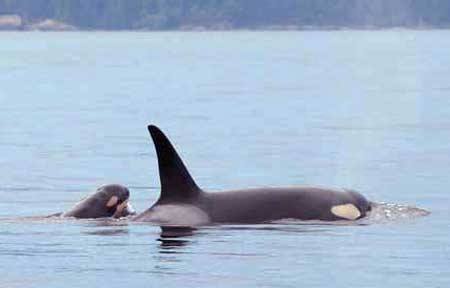The Southern resident killer whales got a bit of a boost last week from one of its youngest members, who also landed in the record books as a result.
Though only 11 1/2 years of age, J-37 earns the distinction as the youngest killer whale to give birth during the 36 years that the Center for Whale Research has been keeping tabs on the three closely related groups of orcas, which together make up the Southern resident population.
With the addition of the newborn, J-49, the population now numbers 86.
“She’s a first time mom and she’s also the youngest whale to have given birth that we know of,” Erin Heydenreich, senior staff member at the San Juan Island-based research center, said of J-37.
The mother and newborn were traveling the waters of Haro Strait when the two were first spotted together, on Aug. 6. Given the size of the calf — particularly small — and its appearance — a floppy dorsal fin and fetal folds (creases) still visible — Heydenreich said that J-49 was definitely “very, very new” at that time.
The three pods — called “residents” because they spend a majority of the year here — are considered endangered by the U.S. and Canada. The population, believed to have been historically in the high 100s, was decimated by captures for marine parks, which ended in the 1970s, followed by pollution and declining salmon runs.
The Center’s annual survey of Southern residents is used by the federal government as the population’s official count.
The whales’ population plummeted to 71 by 1973, climbed to 99 in 1995, then plummeted to 79 six years later. The population rebounded to 80 in 2002, 85 in 2004 and 89 in 2005, and has seesawed around 88 since then. The whales were declared endangered by the U.S. and Canada by 2005.
In theory, the odds of J-49 surviving into adulthood are even. Scientists say the mortality rate for newborn killer whales in the wild is 50 percent.
Still, J-49 is the offspring of a family whose females have been among the population’s more reproductively active. Its grandmother, J-14, now 38, has given to six calves, three of which, J-37 included, have bested those fragile younger years.




